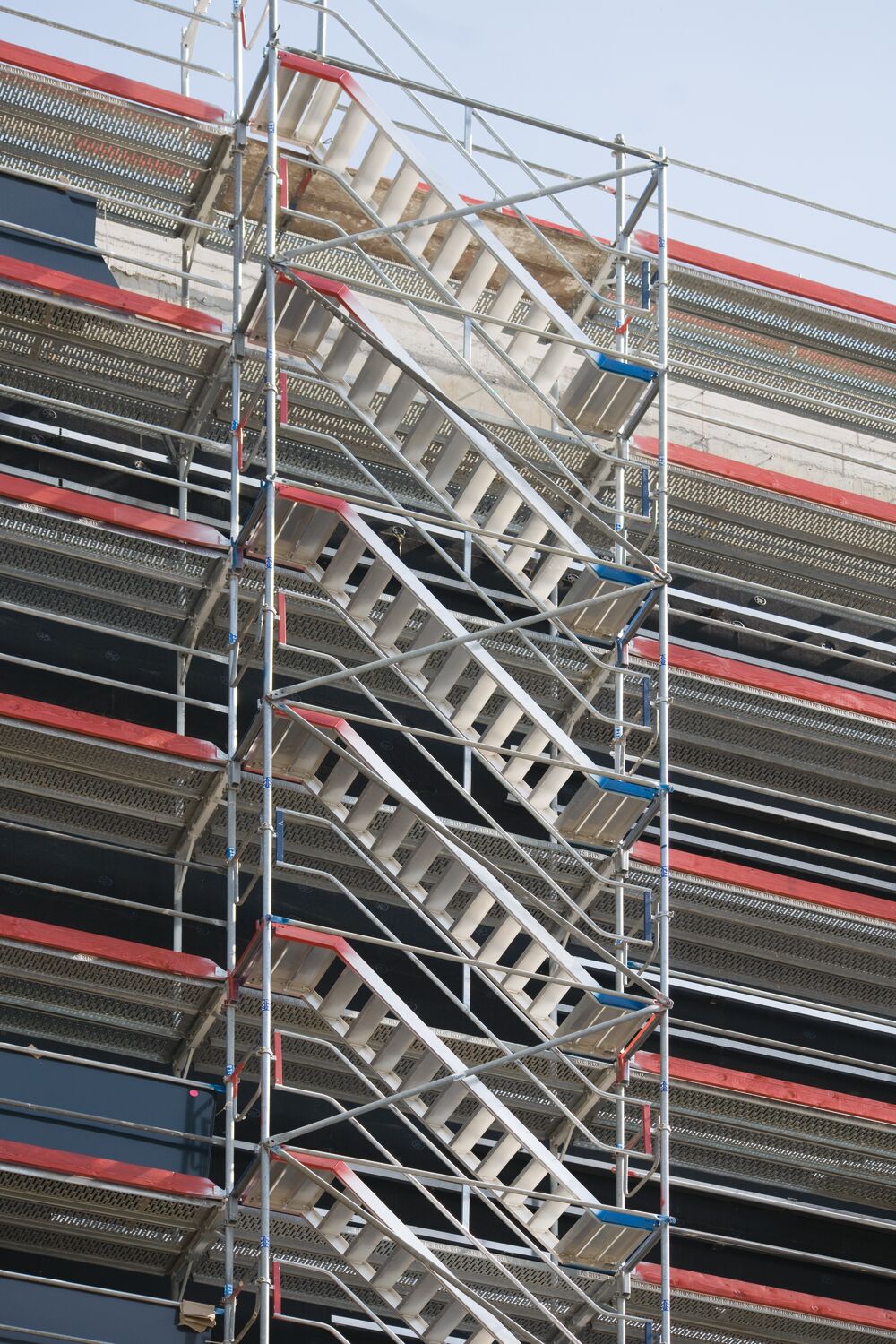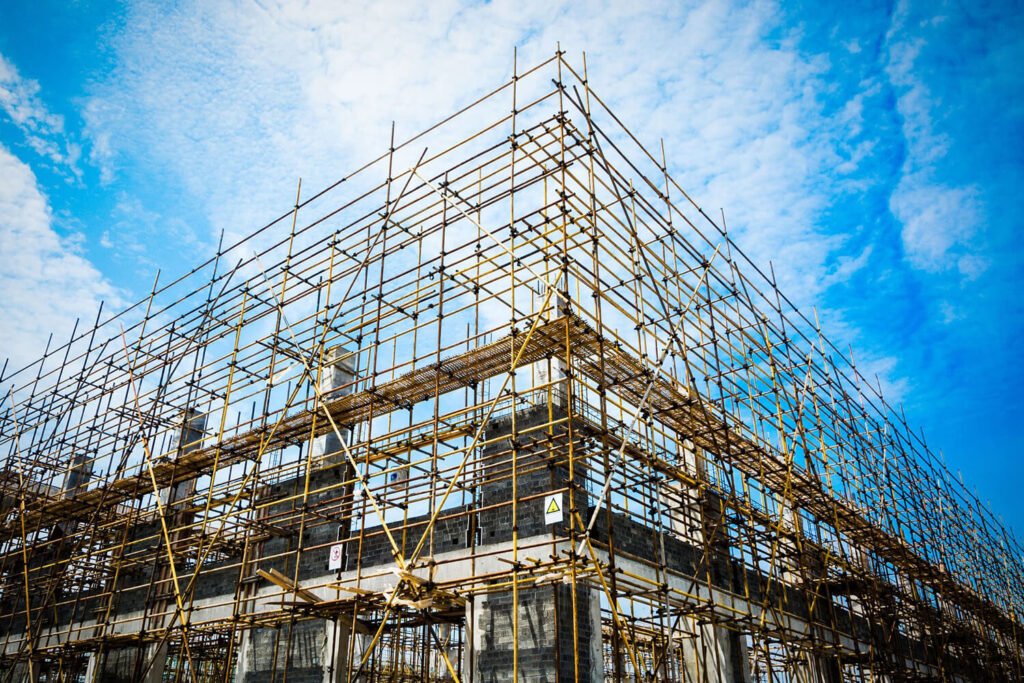Safe and Durable Scaffolding Guildford for Your Upcoming Construction Work
Safe and Durable Scaffolding Guildford for Your Upcoming Construction Work
Blog Article
Checking Out the Different Kinds of Scaffolding Utilized in Building Projects
The building and construction market depends heavily on various kinds of scaffolding to meet details project needs, each offering distinctive advantages and applications. Typical framework scaffolding supplies a durable structure for general jobs, while put on hold scaffolding is vital for service skyscraper structures. Various other choices, such as system and rolling scaffolding, deal with effectiveness and mobility, specifically. The cantilever variant confirms indispensable in city environments where room is constricted. Understanding the subtleties of these scaffolding kinds is essential for optimizing safety and security and efficiency on construction sites, motivating a better examination of their distinct features and applications.

Standard Framework Scaffolding
Conventional framework scaffolding is among the most extensively used techniques in the construction market because of its toughness and flexibility. This system is composed of upright and straight frames that are assembled to create a steady platform for materials and employees. The major elements consist of vertical messages, straight journals, and angled dental braces, which with each other give a strong framework that can sustain substantial lots.
One of the vital benefits of typical structure scaffolding is its adaptability to various construction projects, ranging from household buildings to big business frameworks. The modular design permits for easy assembly and disassembly, making it effective for both short-term and lasting projects. Furthermore, the system can be personalized in elevation and size, fitting various structure designs and website problems.
Safety and security is vital in scaffolding applications, and traditional framework systems are geared up with guardrails and toe boards to stop drops and make certain worker security. Routine examinations and adherence to safety and security laws are crucial in keeping the integrity of the scaffold (Scaffolding). Generally, conventional framework scaffolding continues to be an essential selection in the building market, supplying a reliable system for labor and enhancing total project efficiency

Suspended Scaffolding
Suspended scaffolding offers an one-of-a-kind service for building and construction tasks that need accessibility to raised surfaces, specifically in circumstances where typical frame scaffolding might be not practical. This type of scaffolding is typically put on hold from the roof covering or top degrees of a structure, using a system of pulleys, ropes, and platforms to produce a functioning area that can be gotten used to different elevations.
Among the primary advantages of put on hold scaffolding is its adaptability. It can be conveniently rearranged or reduced to suit changes in building demands, making it ideal for tasks such as home window setup, façade job, and maintenance on skyscrapers. Furthermore, the marginal impact of put on hold scaffolding allows for better use of ground space in metropolitan atmospheres, where room is frequently restricted.
Safety and security is an important factor to consider in the usage of suspended scaffolding. On the whole, put on hold scaffolding provides a effective and efficient service for accessing hard-to-reach locations in different construction circumstances, enhancing both productivity and safety and article security on website.
System Scaffolding
System scaffolding, commonly considered a modern remedy in the scaffolding market, includes pre-engineered components that can be quickly constructed and adapted for various construction projects. Scaffolding. This kind of scaffolding is characterized by its modular layout, which enables for flexibility and efficiency on task websites, suiting various heights and architectural requirements
Normally made from high-strength steel or aluminum, system scaffolding uses boosted toughness and stability. The elements consist of upright articles, straight ledgers, and angled braces, which interconnect safely, making certain a durable structure. The design commonly incorporates standard installations, streamlining assembly and disassembly processes, therefore lowering labor time and costs.

Rolling Scaffolding
Moving scaffolding is a flexible option to conventional set scaffolding, made for wheelchair and ease of usage on building sites. This kind of scaffolding includes a system supported by structures with wheels, enabling workers to easily transfer it as needed. The mobility feature substantially enhances performance, as it minimizes downtime related to dismantling and putting together fixed scaffolding.
Commonly built from light-weight materials such as light weight aluminum or steel, rolling scaffolding supplies a strong yet portable option for tasks requiring constant repositioning - Scaffolding. It is particularly helpful in jobs such as painting, drywall installation, and electric work, where accessibility to various heights and locations is needed
Security is critical in rolling scaffolding layout, with features such as locking wheels to avoid unintended motion when in operation, and guardrails to shield employees from falls. In addition, many models are adjustable in height, suiting numerous project needs.
Cantilever Scaffolding

The layout of cantilever scaffolding commonly includes using arms or braces anchored to a structure or structure, making it possible for the system to extend outside securely. Security is paramount; therefore, these scaffolds should be crafted to endure environmental problems and different tons. Normal evaluation and upkeep are important to guarantee structural stability and worker safety and security.
Cantilever scaffolding is favored for its convenience and efficient usage of area, making it a popular option in city environments where area restraints are typical. It helps with much easier accessibility to high altitudes, eventually adding to the overall efficiency of building and construction jobs. Similar to all scaffolding kinds, proper training and adherence to safety requirements are crucial for workers using cantilever scaffolding.
Verdict
Standard framework scaffolding offers stability, while suspended scaffolding supplies convenience for elevated tasks. System scaffolding helps with quick setting up, and rolling scaffolding improves movement for varying job settings.
Typical framework scaffolding offers a durable foundation for basic tasks, while put on hold scaffolding is vital for work on skyscraper frameworks.Rolling scaffolding is a flexible alternative to traditional set scaffolding, developed for mobility and simplicity of usage on building and construction sites. As with all scaffolding kinds, appropriate training and adherence to safety and security criteria are vital for employees using cantilever scaffolding.
Traditional frame scaffolding provides security, while put on hold scaffolding offers adaptability for raised jobs. System scaffolding promotes quick setting up, and rolling scaffolding improves movement for varying job environments.
Report this page